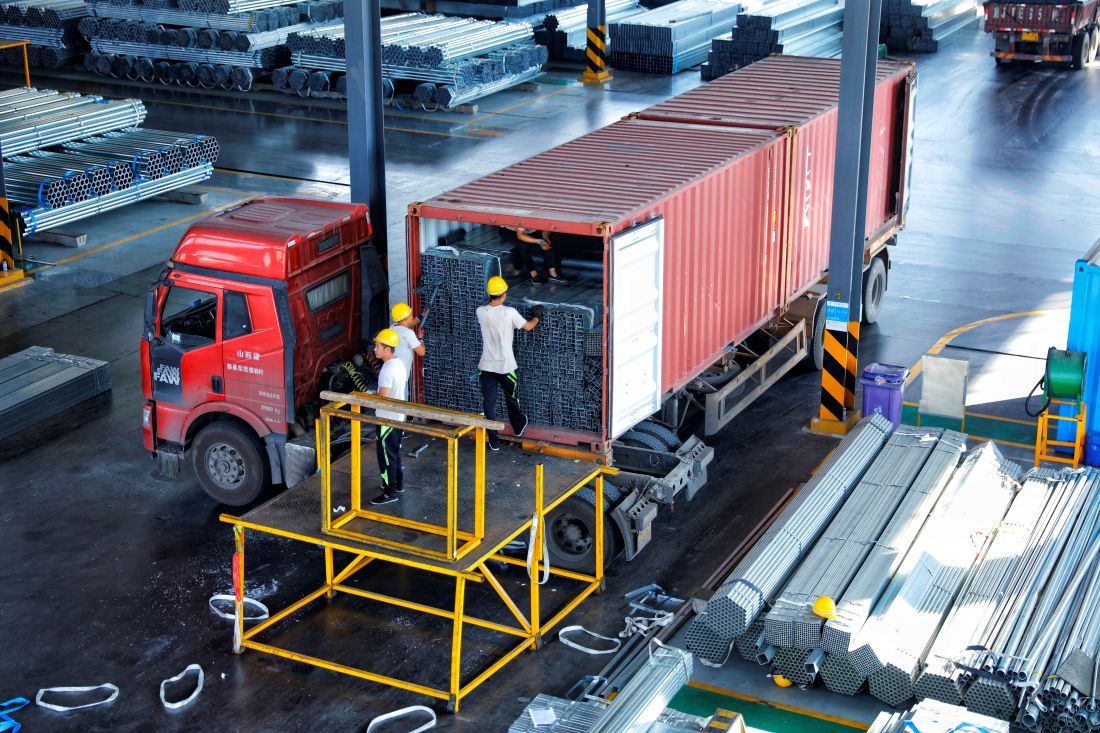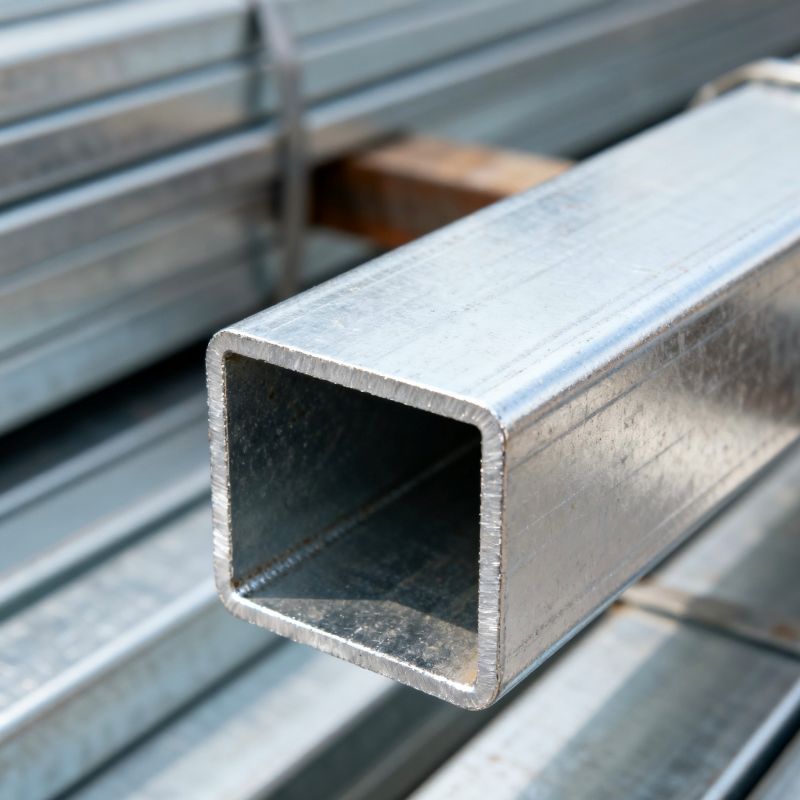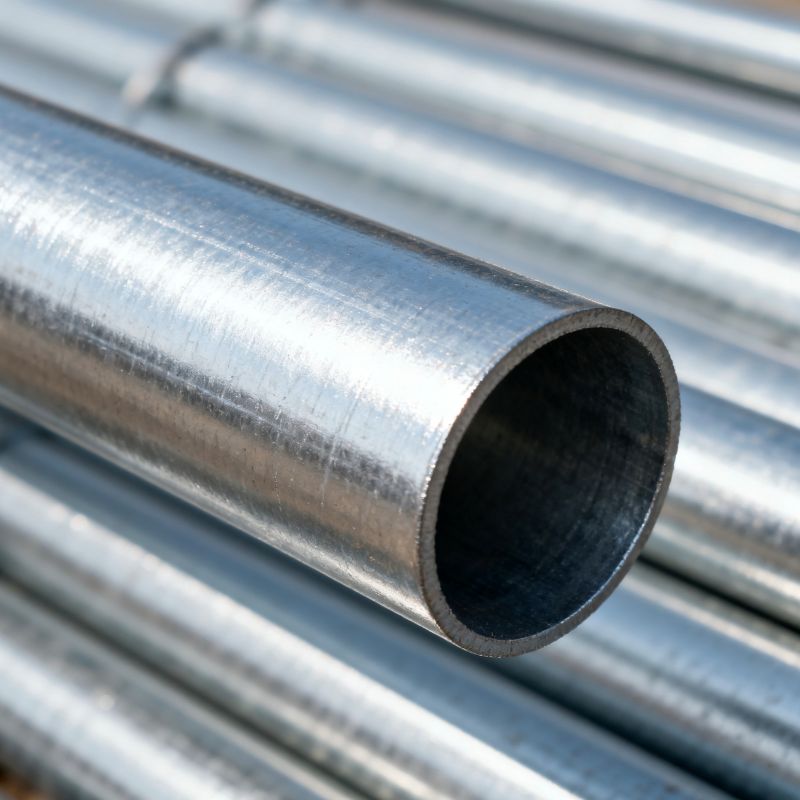Better Touch Better Business
Contact Sales at TIANYINGTAI.
As important industrial and construction materials, galvanized steel pipes are mainly divided into two categories: hot-dip galvanized steel pipes and cold galvanized steel pipes (i.e., electrogalvanized steel pipes). Although these two types of pipes may look similar on the surface, they differ significantly in performance, production processes, and application fields. Understanding these differences is crucial for selecting the right material.

Hot-dip galvanized steel pipes have significantly higher corrosion resistance than cold galvanized ones. Cold galvanized steel pipes (electrogalvanized) have an extremely low zinc coating content, approximately 10g to 20g per square meter, resulting in limited corrosion resistance. In contrast, hot-dip galvanized steel pipes offer superior rust resistance and can provide long-lasting protection in harsh environments.
The biggest difference lies in the galvanizing process. Hot-dip galvanized steel pipes use a high-temperature hot-dip process, immersing the steel pipe in molten zinc at 450°C to 480°C, causing a metallurgical reaction between zinc and the pipe surface to form a zinc-iron alloy layer. This process requires high temperatures and complex equipment investment. Cold galvanized steel pipes, on the other hand, deposit zinc on the pipe surface via electroplating at room temperature, a relatively simple process with lower equipment requirements.

Hot-dip galvanized steel pipes typically have a coating thickness of over 35 microns, with the coating tightly bonded to the pipe surface, evenly distributed, and strong adhesion. The formation of a zinc-iron alloy layer ensures firm bonding between the coating and the pipe substrate, providing not only good corrosion resistance but also excellent wear resistance. Cold galvanized steel pipes have a thinner coating, generally between 5-15 microns, with weaker adhesion. The coating is prone to peeling and has relatively poor corrosion resistance, making it more vulnerable to damage from the external environment.
Hot-dip galvanized pipes have a rough, dull silver-white surface with traces such as watermarks, drips, or zinc flowers due to the production process, and they do not shine or reflect light overall. Cold galvanized pipes have a smoother, brighter surface: after color passivation, they appear yellow-green; after white passivation, they appear bluish-white. They may show iridescent reflections at certain angles and have no obvious zinc nodules or lumps.
In terms of price, hot-dip galvanized steel pipes are usually more expensive than cold galvanized ones. This is because the hot-dip galvanizing process is complex, requiring high-temperature equipment and more zinc materials, leading to higher production costs. In contrast, the cold galvanizing process is simple with lower equipment investment, so manufacturers offer cold galvanized steel pipes at generally lower prices to ensure profits. This makes cold galvanized steel pipes more popular in cost-sensitive applications where corrosion resistance requirements are not high.

Hot-dip galvanized steel pipes undergo comprehensive galvanizing treatment, ensuring all surfaces are fully protected. Cold galvanized steel pipes, however, are often galvanized only on one or part of the surface, resulting in limited protection.
In terms of adhesion, the zinc layer of hot-dip galvanized steel pipes forms a metallurgical bond with the pipe substrate through the zinc-iron alloy layer, ensuring strong connection and resistance to peeling. The zinc layer of cold galvanized steel pipes simply adheres to the pipe substrate surface without metallurgical bonding, resulting in poor adhesion and easy peeling.
Due to their excellent corrosion resistance and wear resistance, hot-dip galvanized steel pipes are widely used in construction, machinery, coal, chemical, power, railway vehicles, automotive industry, and other fields, particularly suitable for outdoor environments, humid areas, and highly corrosive conditions. Cold galvanized steel pipes, with their thin coating and weak corrosion resistance, are mainly used in indoor decoration, electrical manufacturing, and light industrial products.
Hot-dip galvanized steel pipes and cold galvanized steel pipes each have their own characteristics and applicable scenarios. Hot-dip galvanized steel pipes, with their superior corrosion resistance, wear resistance, and long service life, are the first choice for harsh environments, while cold galvanized steel pipes play a role in environments with low corrosion requirements and relatively mild conditions due to their lower cost. Got it?
Click the button below to get the latest quotes.

Copyright © 2019 Tianjin Tianyingtai Steel Pipe Co., LTD. | All Rights Reserved